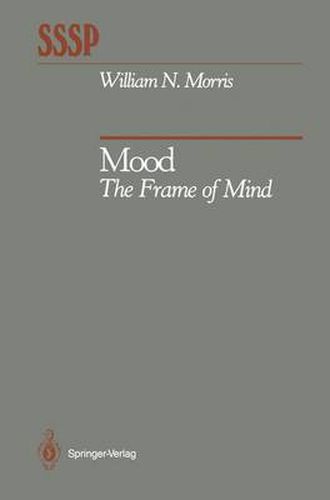Readings Newsletter
Become a Readings Member to make your shopping experience even easier.
Sign in or sign up for free!
You’re not far away from qualifying for FREE standard shipping within Australia
You’ve qualified for FREE standard shipping within Australia
The cart is loading…






This title is printed to order. This book may have been self-published. If so, we cannot guarantee the quality of the content. In the main most books will have gone through the editing process however some may not. We therefore suggest that you be aware of this before ordering this book. If in doubt check either the author or publisher’s details as we are unable to accept any returns unless they are faulty. Please contact us if you have any questions.
This is a book about moods. Though I will define the term somewhat more carefully in Chapter 1, it might help to note here that I use the word mood to refer to affective states which do not stimulate the relatively specific response tendencies we associate with emotions . Instead, moods are pervasive and global, having the capability of influencing a broad range of thought processes and behavior. My interest in mood was provoked initially by the empirical and conceptual contri butions of Alice Isen and her colleagues. What fascinated me most was the sugges tion first made in a paper by Clark & Isen (1982) that mood seemed to affect behavior in two very different ways, i. e. , mood could automatically influence the availabil ity of mood-related cognitions and, thereby, behavior, or mood, especially of the bad variety, might capture our attention in that if it were sufficiently aversive we might consciously try to get rid of it, a controlled or strategic response.
$9.00 standard shipping within Australia
FREE standard shipping within Australia for orders over $100.00
Express & International shipping calculated at checkout
Stock availability can be subject to change without notice. We recommend calling the shop or contacting our online team to check availability of low stock items. Please see our Shopping Online page for more details.
This title is printed to order. This book may have been self-published. If so, we cannot guarantee the quality of the content. In the main most books will have gone through the editing process however some may not. We therefore suggest that you be aware of this before ordering this book. If in doubt check either the author or publisher’s details as we are unable to accept any returns unless they are faulty. Please contact us if you have any questions.
This is a book about moods. Though I will define the term somewhat more carefully in Chapter 1, it might help to note here that I use the word mood to refer to affective states which do not stimulate the relatively specific response tendencies we associate with emotions . Instead, moods are pervasive and global, having the capability of influencing a broad range of thought processes and behavior. My interest in mood was provoked initially by the empirical and conceptual contri butions of Alice Isen and her colleagues. What fascinated me most was the sugges tion first made in a paper by Clark & Isen (1982) that mood seemed to affect behavior in two very different ways, i. e. , mood could automatically influence the availabil ity of mood-related cognitions and, thereby, behavior, or mood, especially of the bad variety, might capture our attention in that if it were sufficiently aversive we might consciously try to get rid of it, a controlled or strategic response.